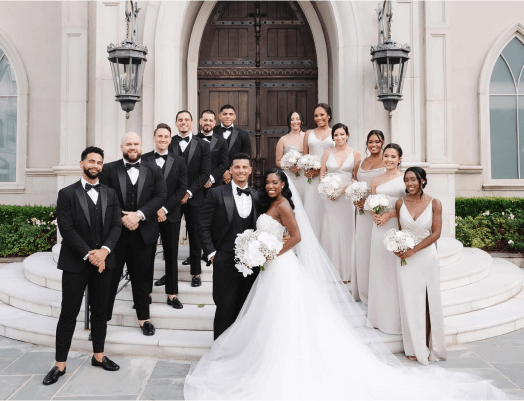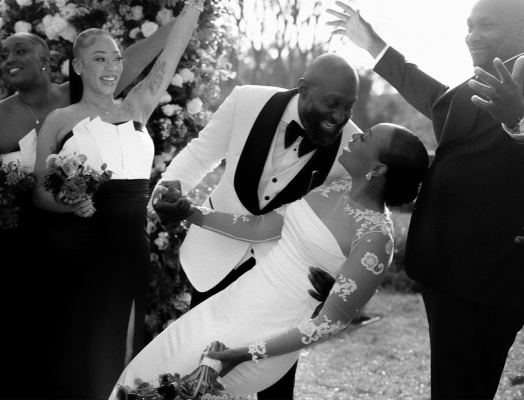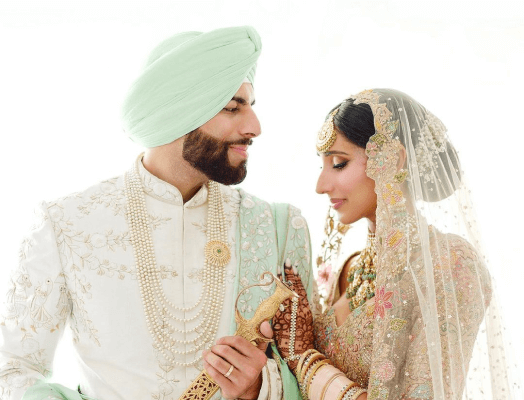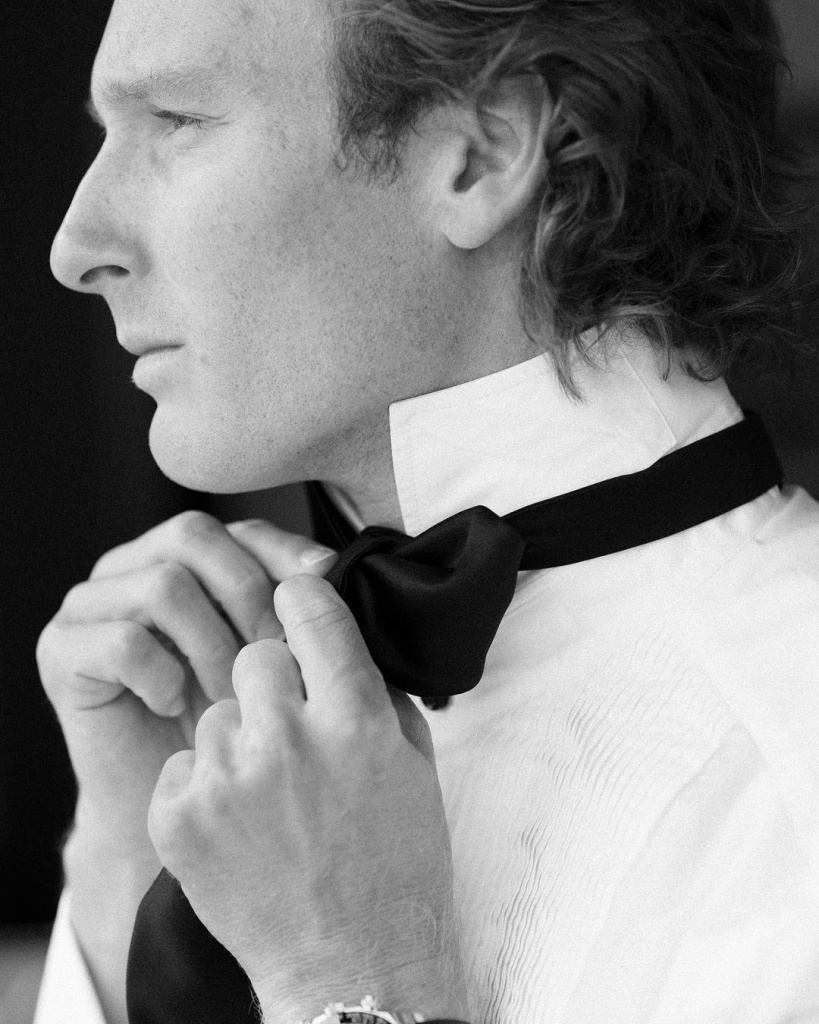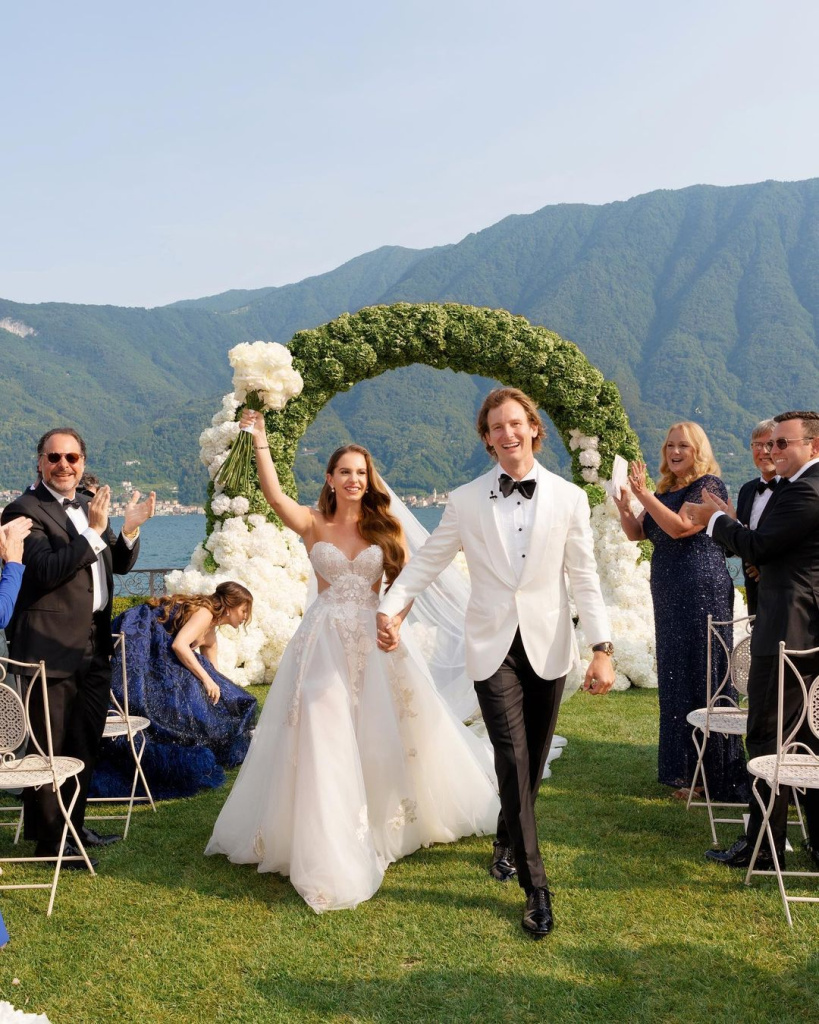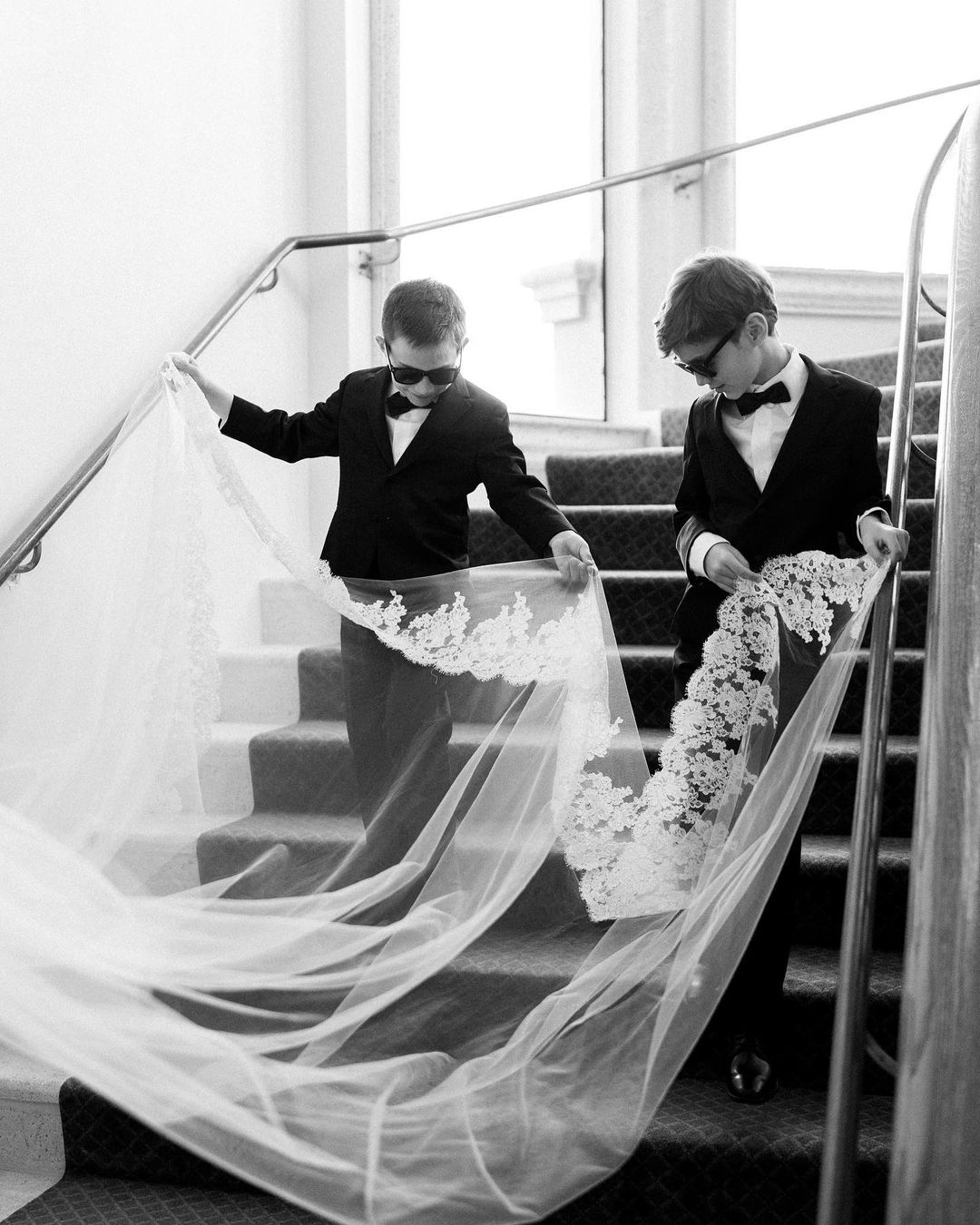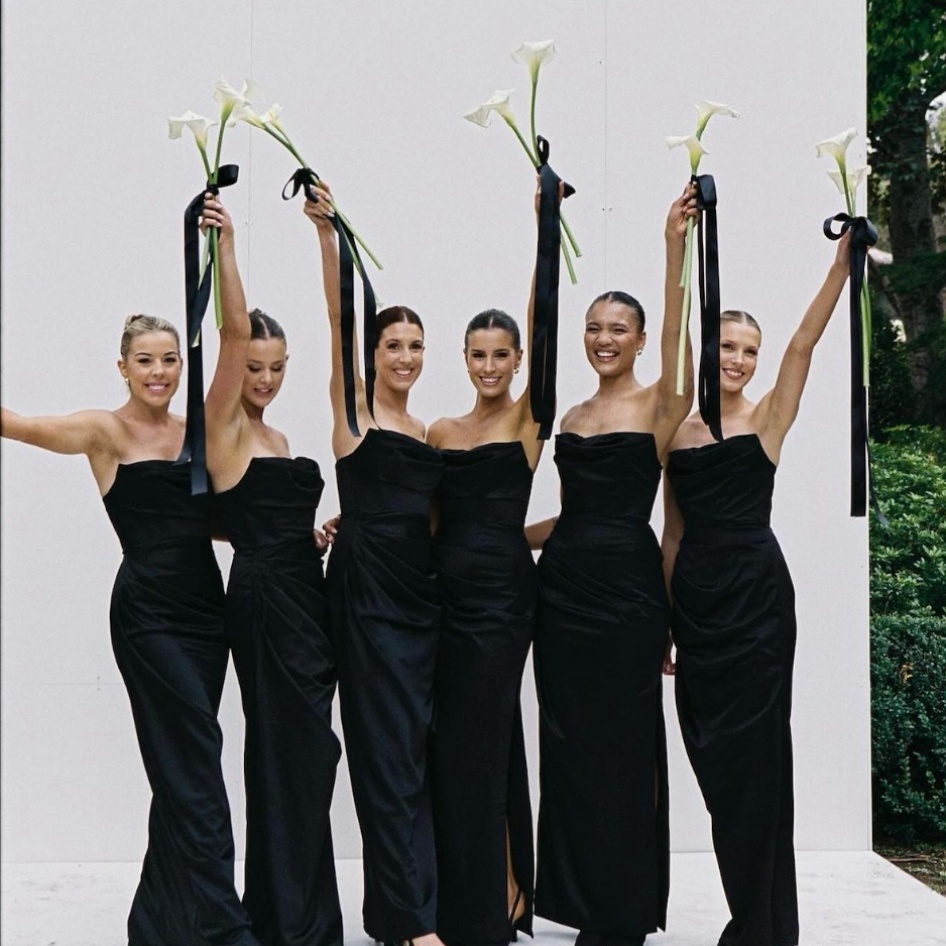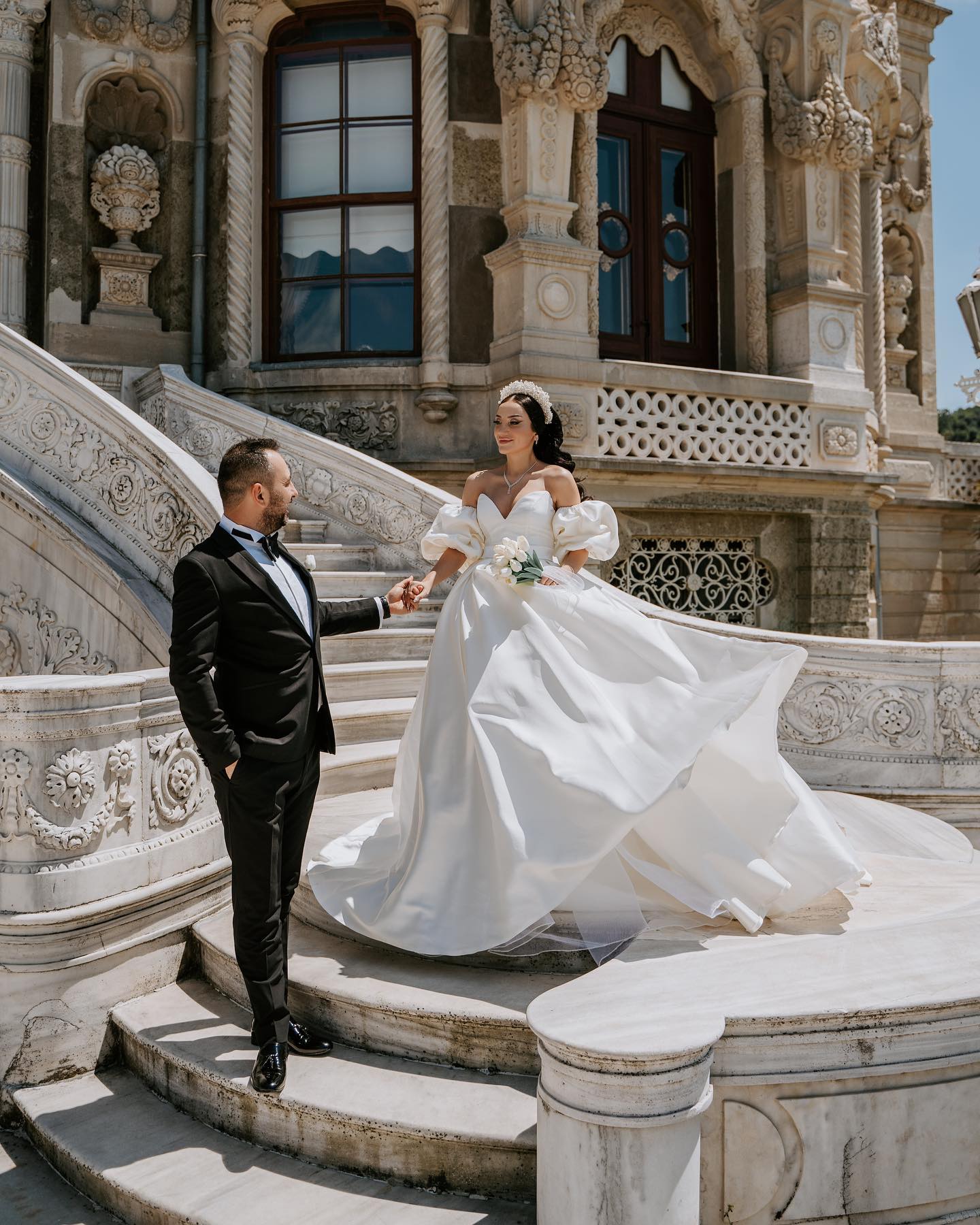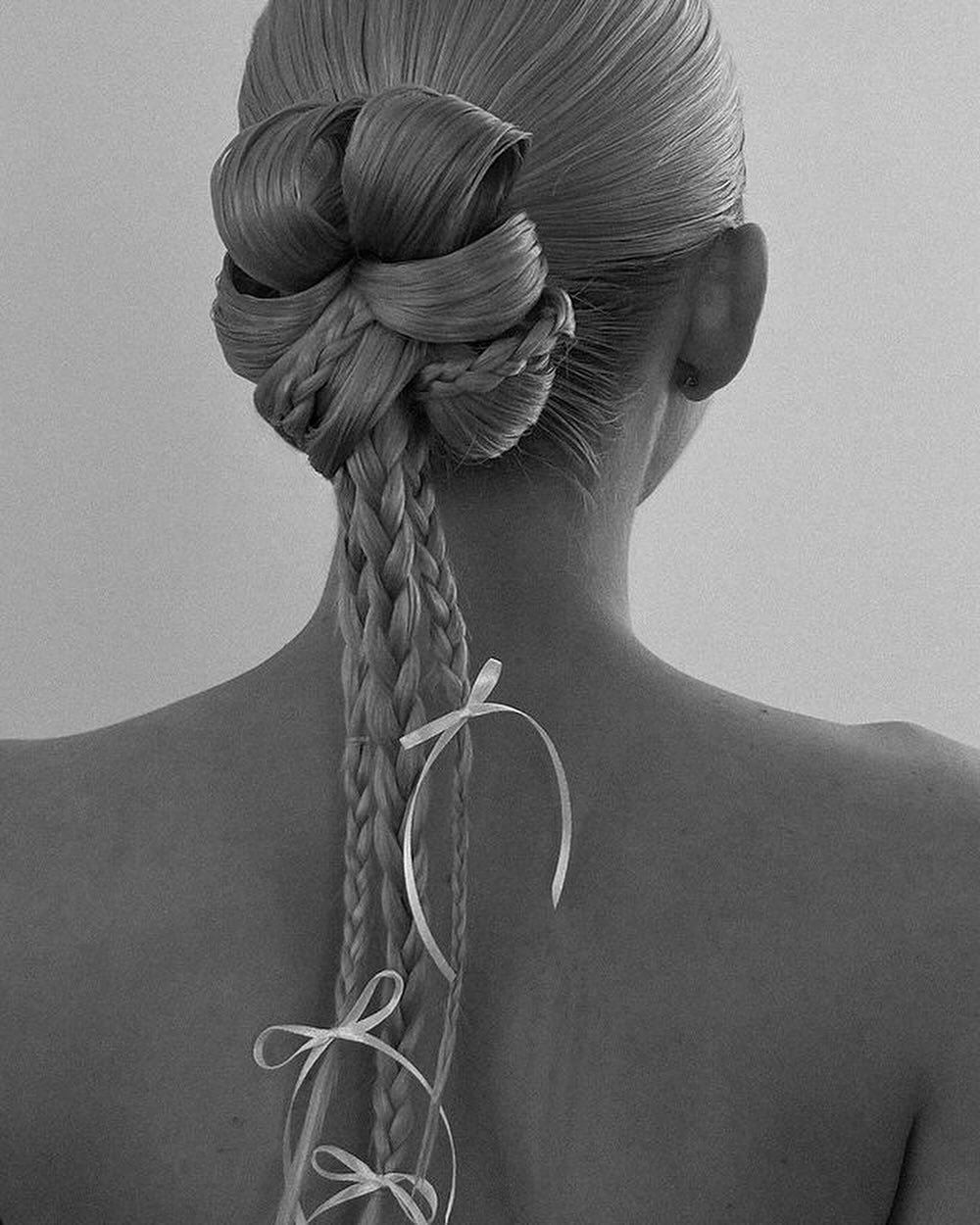Suit or Tuxedo: Navigating Your Formal Wear Options
- Author: Natali Grace Levine
- Reading time: 7 min 7 sec
- Publication date: 06/18/2024
- Updated: 01/15/2025
Choosing the right attire for a wedding or any upscale event can often come down to one major decision: should you wear a tuxedo or suit for the wedding? Both are stylish and sophisticated, but they serve different purposes and convey distinct levels of formality. It's not just about looking good; it's about dressing appropriately for the occasion. Whether you’re gearing up as the groom or suiting up as a guest, understanding the key differences between a tuxedo and a suit will help ensure you’re perfectly attired for the celebration. Let’s clear up the confusion with a detailed comparison.
Find Your Perfect Wedding Vendors
What's the Difference Between a Suit and a Tux?
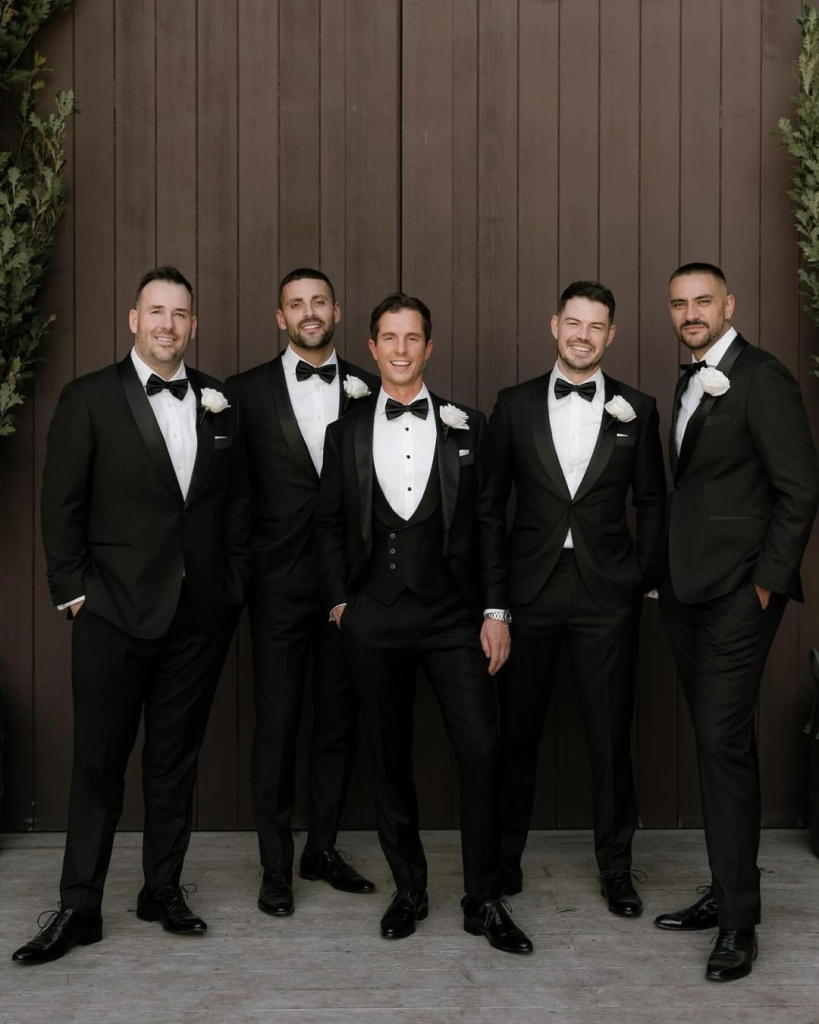
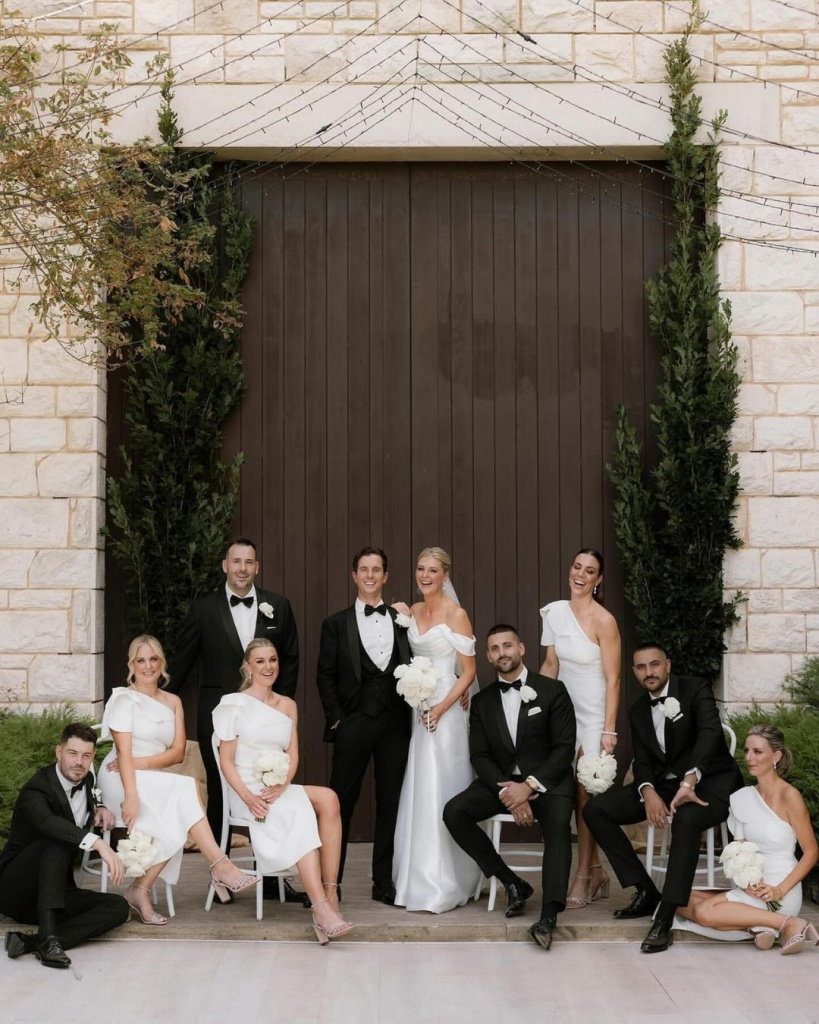
Understanding the subtleties between a suit and a tuxedo is crucial for picking the right attire for any formal event. While both options might seem suitable for a wedding or an elegant party, each brings its own flair and level of formality to the table. Let’s delve deeper into the fabric, accessories, color, and appropriate occasions for each to see how they stack up against each other.
Fabric Differences
Tuxedos elevate their appeal with luxurious satin details, including satin-faced lapels, satin-covered buttons, and a satin stripe along the pant legs, contributing to their distinctive formal look. Suits, on the other hand, generally maintain a consistent fabric throughout, often in wool or a wool blend, which lends itself to a variety of settings beyond strictly formal ones.
Accessory Compatibility
The classic tuxedo pairs traditionally with very specific accessories: a white dress shirt with a stiff front, a bow tie (silk or satin), and often a cummerbund or vest to complete the look. Suits are less prescriptive, offering more flexibility in the choice of ties, including traditional long ties or bow ties, and rarely require additional pieces like vests unless for special occasions or stylized preferences.
Color and Pattern Variability
Tuxedos typically adhere to a stricter color palette—most commonly black or midnight blue. This restriction is what aligns them with more formal, traditionally evening affairs. Suits break away from this mold by offering a broad spectrum of colors and patterns, ranging from understated grays and blues to bold checks and stripes, making them suitable for a variety of events from daytime business meetings to less formal evening gatherings.
Event Suitability
The rule of thumb is fairly straightforward: tuxedos are reserved for the most formal of events, such as black-tie weddings, galas, and operas, which typically take place in the evening. Suits are far more versatile and are considered appropriate for a wide range of occasions, from office work to weddings, and can be worn at any time of the day.
Suit or Tuxedo: What to Choose?
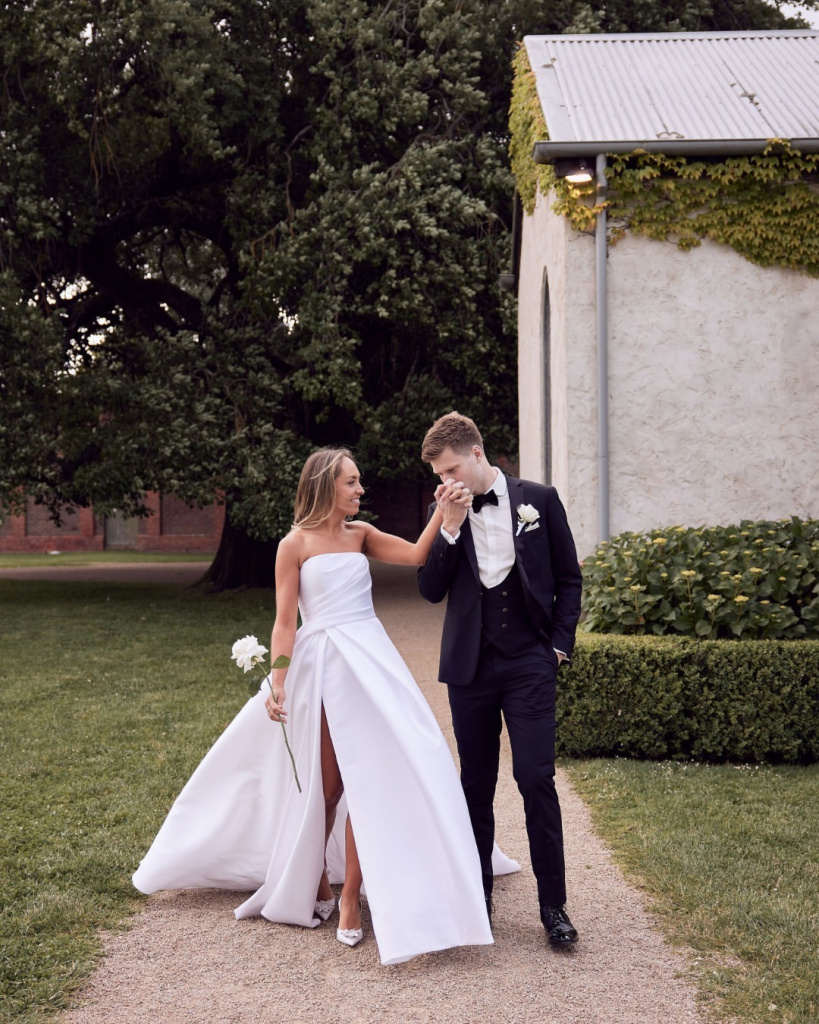
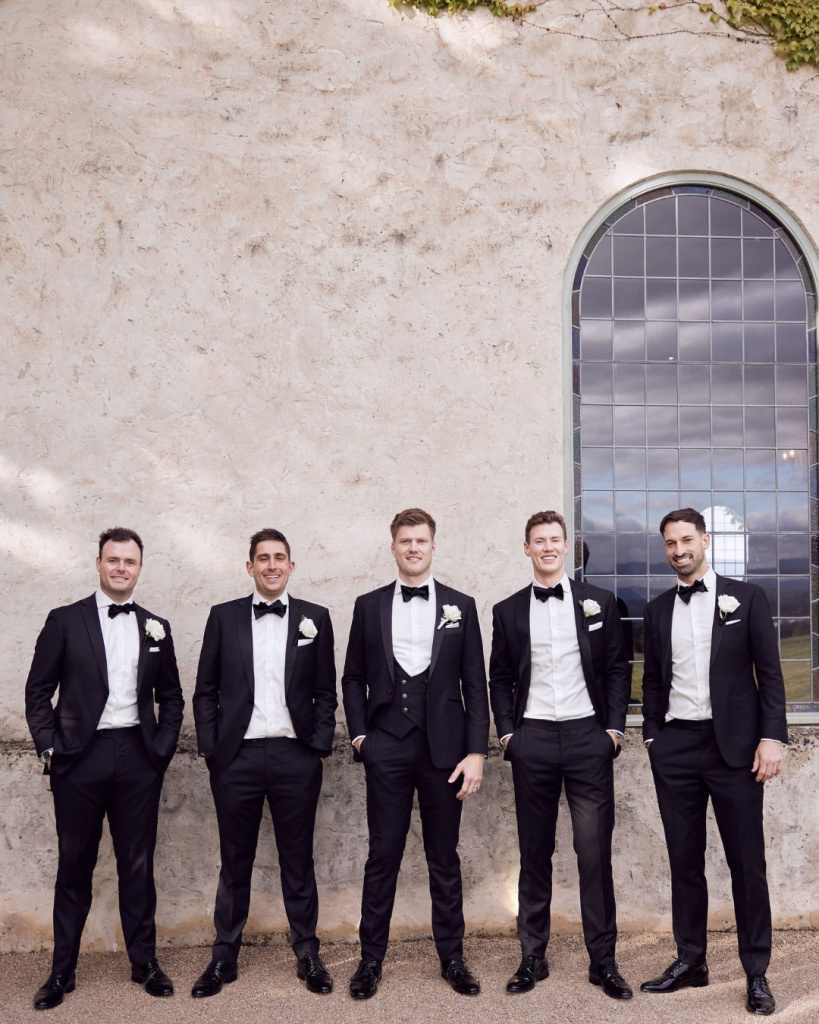
Choosing between a suit and a tuxedo can seem daunting, but the decision becomes clearer once you consider several factors about your event and personal style. Here’s how to determine which option will make you look and feel your best at any wedding.
Formality of the Event
The formality of the event is perhaps the most crucial factor in deciding whether to don a tuxedo or suit. Here's a simple guide:
- Black Tie: This is a clear signal for a tuxedo. It's the standard for very formal evening events.
- Black Tie Optional: A tuxedo is safe, but a dark, well-tailored suit is also acceptable.
- Semi-Formal or Cocktail: Suits are perfect here, ideally in darker shades for evening events.
- Casual or Informal: Go with a suit, and feel free to play with colors and patterns.
Understanding the dress code specified on the invitation will help you align your outfit choice with the event’s level of formality, ensuring that you neither underdress nor overdress.
Personal Style
Your personal style should guide your choice between a tuxedo and a suit. Consider what you feel most confident and comfortable wearing. If you lean towards a classic and sophisticated look, a tuxedo might be the way to go. If you prefer versatility or a slightly less formal style, a suit would be a better fit. Reflecting your personal style in your choice will not only make you look good but also feel good throughout the event.
Versatility and Future Use
If you're considering an investment piece, think about the versatility of a suit versus a tuxedo:
- Repeat Use: Suits can be worn for various occasions, from business meetings to parties.
- Flexibility in Styling: Suits allow for different shirt, tie, and shoe combinations.
- Seasonality: Suits can be adapted for all seasons depending on the fabric and color.
On the other hand, a tuxedo, while elegant, is traditionally limited to very formal events and may not serve as many purposes in your wardrobe.
Season and Time
The season and time of day of the event can also influence your decision:
- Daytime Events: Suits are generally more appropriate for daytime events. Opt for lighter colors and fabrics in spring and summer, like grey or light blue.
- Evening Events: Tuxedos are ideal for evening affairs. They complement the night’s formal ambiance with their sleek and polished look.
Considering these factors will help you make a practical and stylish choice whether to go with a suit or a tuxedo. By aligning your outfit with the specifics of the event and your personal preferences, you'll ensure that your appearance is both appropriate and impressive.
Suit or Tux for Groom: Money Talk
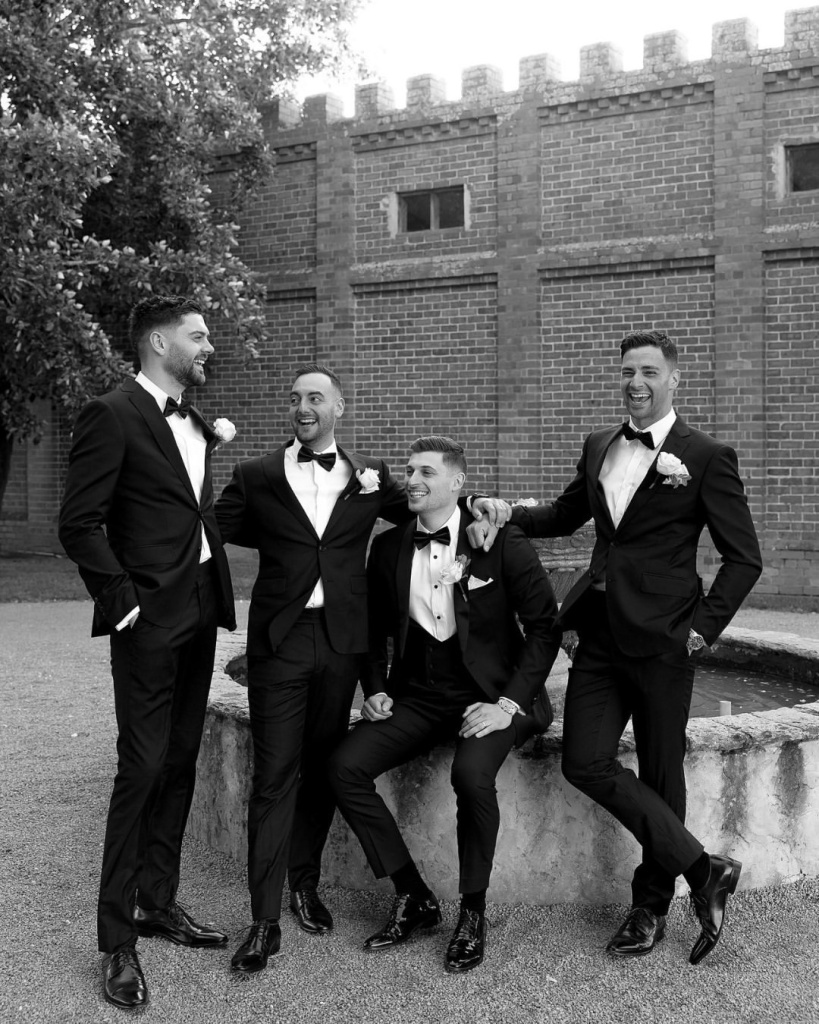
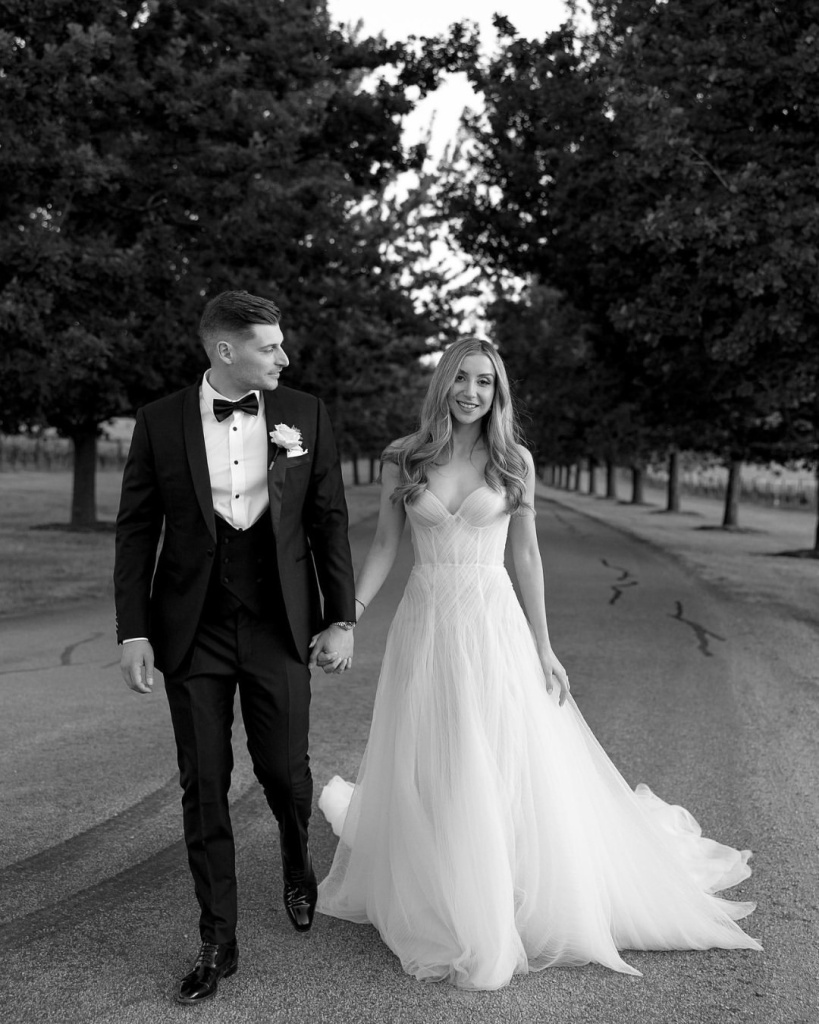
When planning for a wedding, budget considerations are crucial, especially when it comes to choosing the groom's attire. Whether you decide on a suit or a tuxedo, understanding the associated costs can help you budget effectively and make a choice that aligns with your financial plans. Here's a breakdown of the typical costs associated with each option, helping you navigate the economics of your wedding day attire.
Rental Costs
Renting either a suit or a tuxedo can be a cost-effective option, particularly if you don’t foresee frequent use of such formal wear in the future.
- Tuxedo Rentals: Generally, renting a tuxedo costs between $100 to $200. This price often includes the entire set—jacket, trousers, shirt, and sometimes even accessories like a bow tie and cummerbund.
- Suit Rentals: Renting a suit can be slightly less expensive, with prices ranging from $50 to $150. This variation depends largely on the brand and the quality of the suit.
Purchase Costs
Purchasing your wedding attire can be a significant investment but can also serve as a lasting wardrobe addition.
- Buying a Tuxedo: A new tuxedo can cost anywhere from $500 to several thousand dollars, based on the designer and the quality of materials. High-end brands and bespoke options will drive the price higher.
- Buying a Suit: Suits are generally more affordable, with decent options starting around $250. Prices increase with designer labels and custom-tailoring.
Accessories and Additional Costs
Don't forget to account for the cost of accessories, which can add up whether you're renting or buying.
- For a Tuxedo: Accessories might include a bow tie, cummerbund or vest, patent leather shoes, and cufflinks. These can be included in rental costs or purchased separately.
- For a Suit: While less strict, accessories for a suit might include a tie, belt, shoes, and possibly a vest. These items can often be used with other outfits, increasing their value over time.
Long-Term Considerations
Consider the long-term value of investing in a suit or tuxedo. If you anticipate attending many formal events, purchasing a tuxedo might make sense. However, a suit might offer more versatility and opportunities for use in less formal settings.
Understanding these cost elements will help you make a more informed decision when choosing between a suit and a tuxedo for your wedding. It’s not just about the style and formality—your budget and future needs should also play a significant role in your choice. This way, you ensure that your investment in wedding attire is both practical and satisfying.
Suit or Tux: FAQs
Here are some commonly asked questions about choosing between a suit and a tuxedo, along with detailed answers to help you make an informed decision for any formal event.
Can I wear a suit to a black-tie event?
Traditionally, black tie events require a tuxedo. However, modern etiquette has become slightly more flexible, allowing for a very dark, well-tailored suit in some cases, particularly when the event is not strictly formal. Ensure that your suit is accessorized appropriately with a formal tie and dress shoes to maintain a high level of sophistication.
Are tuxedos uncomfortable?
Not necessarily. Modern tuxedos are designed with both style and comfort in mind. High-quality tuxedos are tailored to fit well and often use fabrics that allow for movement, so you shouldn't feel restricted or uncomfortable, provided the tuxedo is properly fitted.
What color suit is most versatile?
A charcoal or navy suit is highly versatile and appropriate for many occasions, ranging from business meetings to weddings. These colors are suitable for both daytime and evening events and can be easily paired with various shirt and tie combinations to suit any level of formality.
Can I re-wear my wedding suit to work?
Absolutely. If you choose a suit in a conservative color and pattern, you can definitely wear it to work and other semi-formal events. This makes a suit a great investment as it serves multiple purposes beyond just your wedding day.
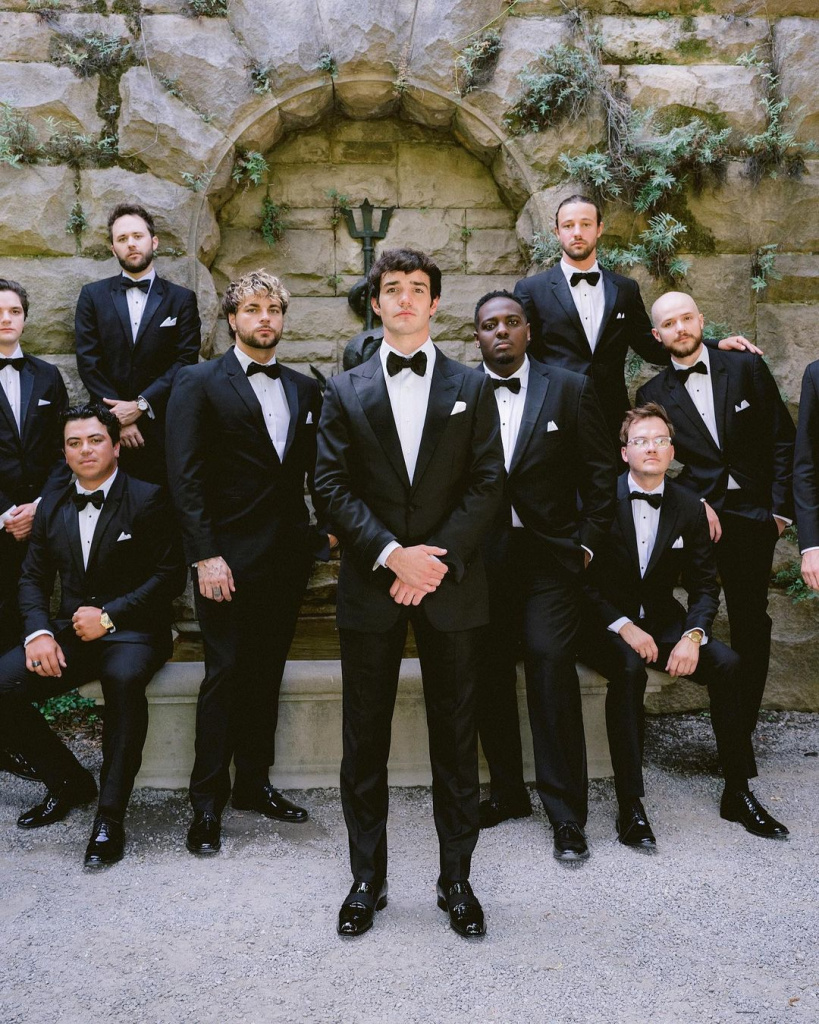
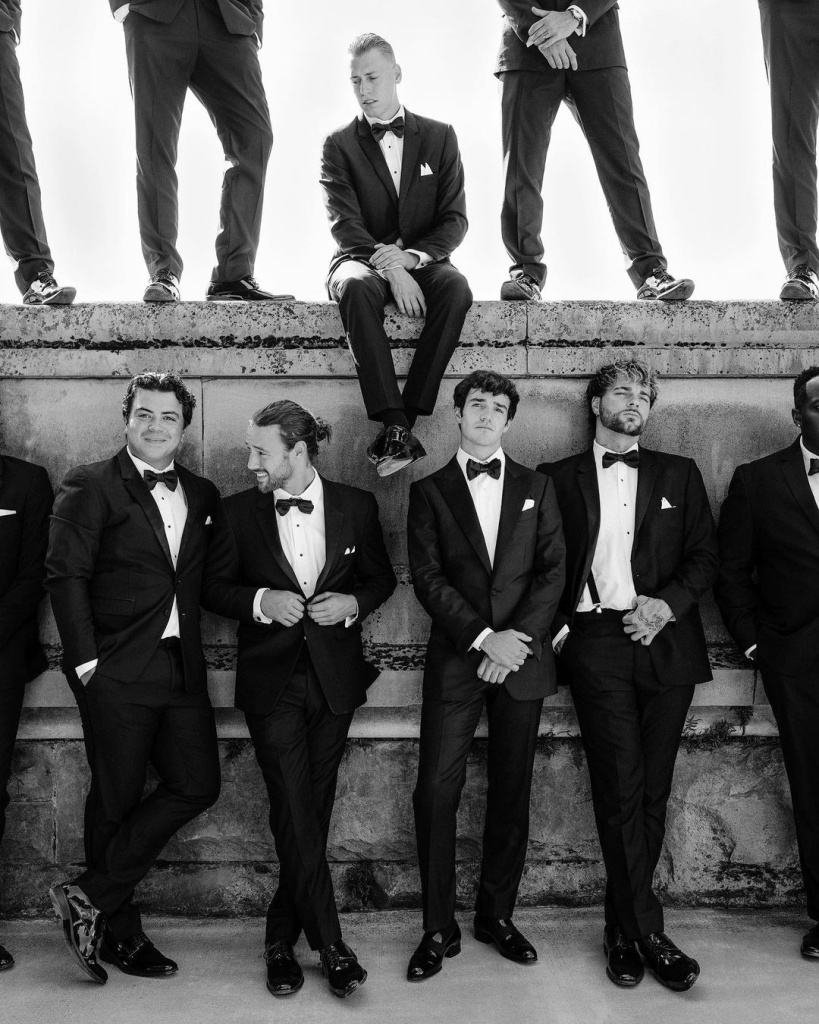
Is it cheaper to rent or buy a suit or tuxedo?
Renting is generally cheaper for one-time or rare occasions, especially if you choose a high-end designer piece. However, if you attend several formal events a year, purchasing might be more cost-effective in the long run. Additionally, owning a suit or tuxedo allows for custom tailoring, ensuring a perfect fit.
What are the essential accessories for a tuxedo?
Essential tuxedo accessories include a bow tie, cummerbund or vest, and patent leather shoes. Cufflinks and a pocket square can also enhance the outfit. These accessories help elevate the formality of the tuxedo, aligning it with traditional black-tie dress codes.
Can I wear a bow tie with a suit?
Yes, a bow tie can be worn with a suit for a distinctive, stylish look. It’s especially appropriate at formal events or when you want to add a touch of personality to your outfit. Choose a bow tie that complements the color and style of your suit for a cohesive look.
How do I choose between a bow tie and a tie?
The choice between a bow tie and a tie often depends on the formality of the event and your personal style. A bow tie is generally more formal and traditional, especially with a tuxedo, while a long tie can be either formal or semi-formal depending on its style and material. Consider what makes you feel most comfortable and what is appropriate for the event you are attending.







